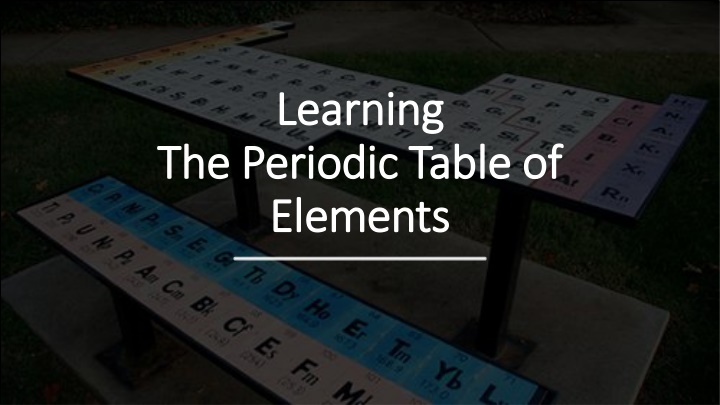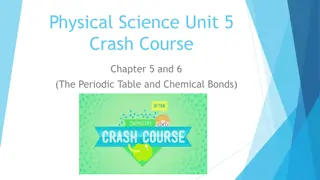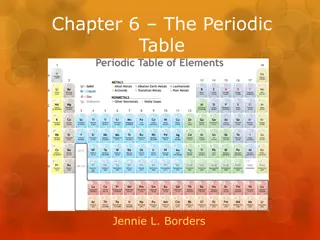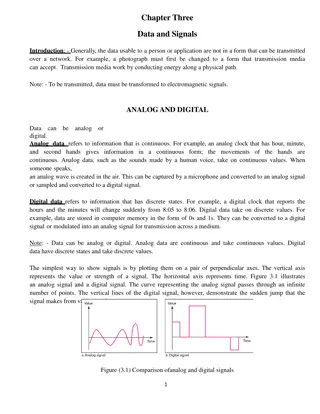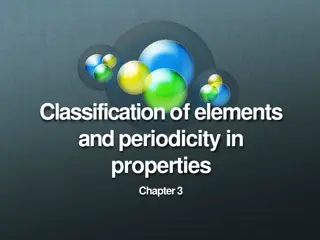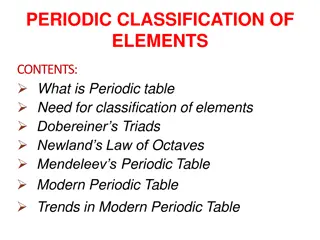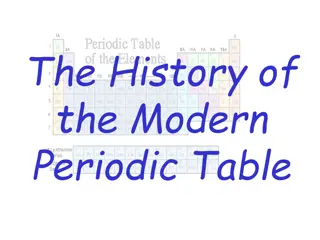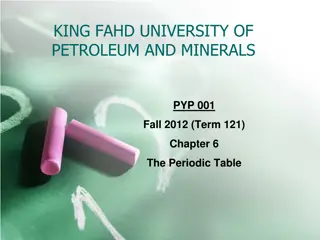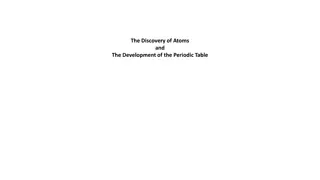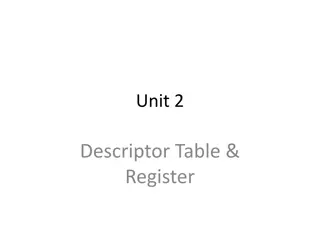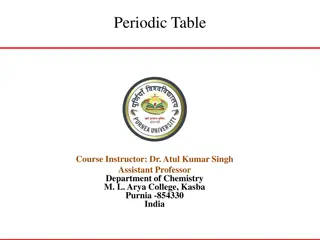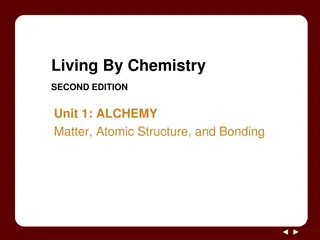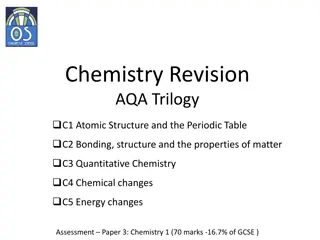Introduction to Elements and The Periodic Table
The periodic table organizes elements by atomic number into rows and columns. Elements in the same group share properties, while metals, non-metals, and metalloids are distinct categories. Metals are lustrous, malleable, and good conductors, while non-metals lack metallic properties.
Download Presentation

Please find below an Image/Link to download the presentation.
The content on the website is provided AS IS for your information and personal use only. It may not be sold, licensed, or shared on other websites without obtaining consent from the author.If you encounter any issues during the download, it is possible that the publisher has removed the file from their server.
You are allowed to download the files provided on this website for personal or commercial use, subject to the condition that they are used lawfully. All files are the property of their respective owners.
The content on the website is provided AS IS for your information and personal use only. It may not be sold, licensed, or shared on other websites without obtaining consent from the author.
E N D
Presentation Transcript
Learning Learning The Periodic Table of The Periodic Table of Elements Elements
How is it Arranged? The elements are put into rows by increasing ATOMIC NUMBER. The horizontal rows are called Periods and are labeled 1 to 7. The vertical column are called Groups and are labeled 1 to 18 The red liperiodsnes show the different periods and the green l groups ines show the groups.
Three States of Matter Substances are made up of particles. The state of the substance depends on the arrangement of the particles. The Three States of Matter Gas Liquid Solid No attraction between particles Far apart Random arrangement Vibrate Move quickly in all directions Particles held weakly Very close together Random arrangement Vibrate Constantly move past each other Particles held tightly Very close together Regular arrangement Vibrate Can t move from place to place
Elements in the same group have similar properties. Remember, groups are columns. Grouped Elements Have Similarities Chemical Property - a property used to characterise materials in reactions that change their identity. Eg: burning something. Physical Property - a characteristic of a substance that can be observed without changing the substance into something else. Eg density, colour, melting point, boiling points, electrical conductivity, etc..
The major categories of elements are the metals, non-metals, and metalloids. Metals, Nonmetals and Metalloids Metals are lustrous, malleable, and are good conductors of heat and electricity. Non-metals are elements that do not share the properties of metals. Metalloids are elements that share some, but not all the properties of metals.
Metals - Lustrous, Malleable, and Good Conductors? These are physical properties of metals Lustrous means shiny or reflective of light. Coins and jewelry are shiny and reflective . Malleable means capable of being shaped. Aluminum foil is shaped or molded around food items to keep them fresh. Being a Good Conductor means being able to allow electricity and heat to flow through. When you think about the wires we use for electrical devices, they are mostly made of copper and other metals.
Alkali Metals Elements in Group 1 (not including Hydrogen). Very reactive metals. Always combine with something else in nature. Salt an Alkali Metal, Sodium, and another element, Chlorine, combined.
Alkaline Earth Metals Elements in Group 2. Reactive Metals that are always combined with non- metals in nature. Several of these elements are important mineral nutrients, like Calcium.
Transition Metals Elements in Groups 3-12. Less reactive, harder metals. Includes metals used in jewelry, money and construction.
Halogens Elements in Group 17. Very reactive, diatomic non- metals. Always found combined with other elements in nature. Chlorine is used to keep bacteria out of swimming pools.
Noble Gases Elements in Group 18. VERY unreactive gases. Used in lighted neon signs. Helium is used to make party balloons float.
Elements Used Everyday Elements Used Everyday Can you think of any elements you use every day?
